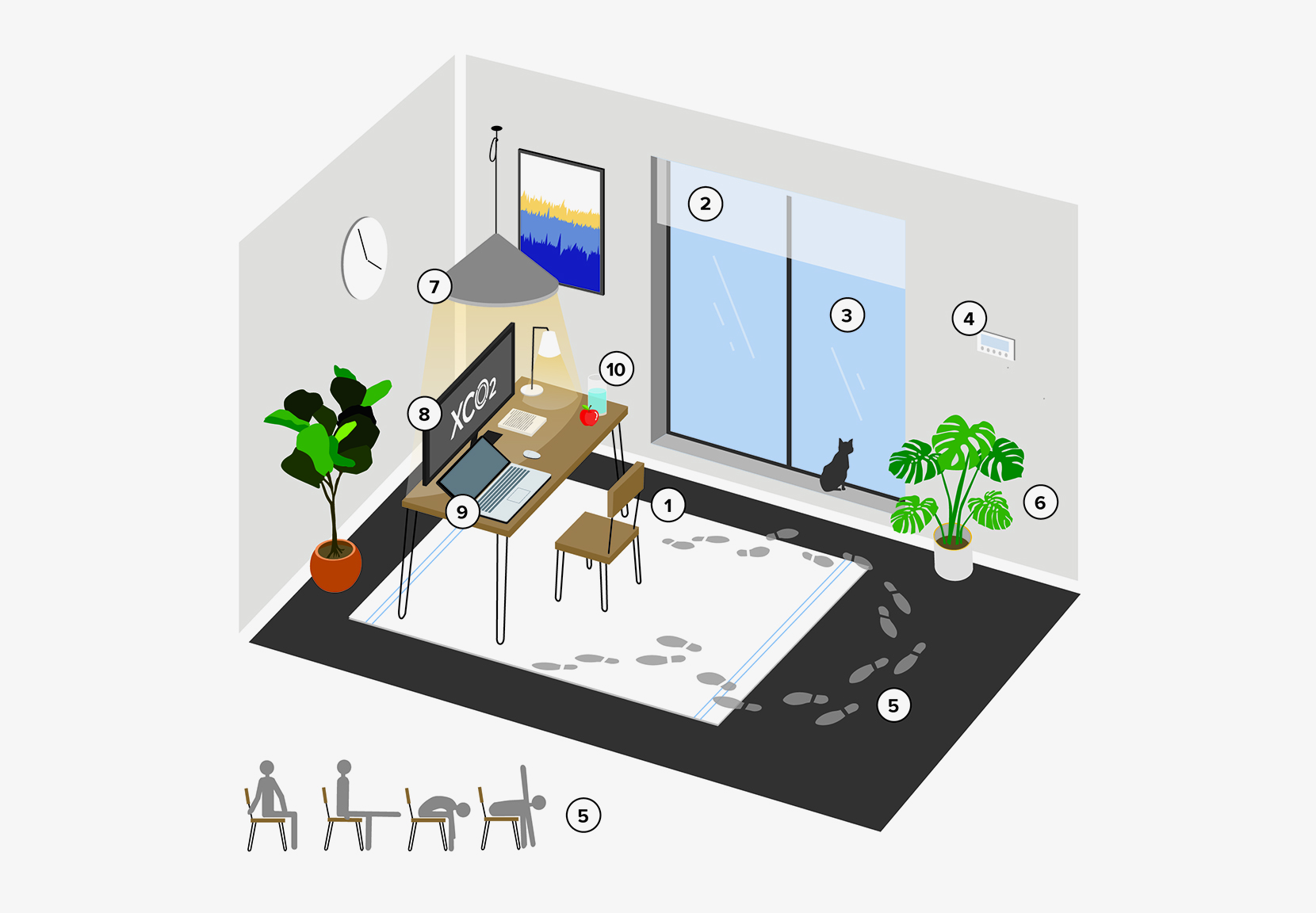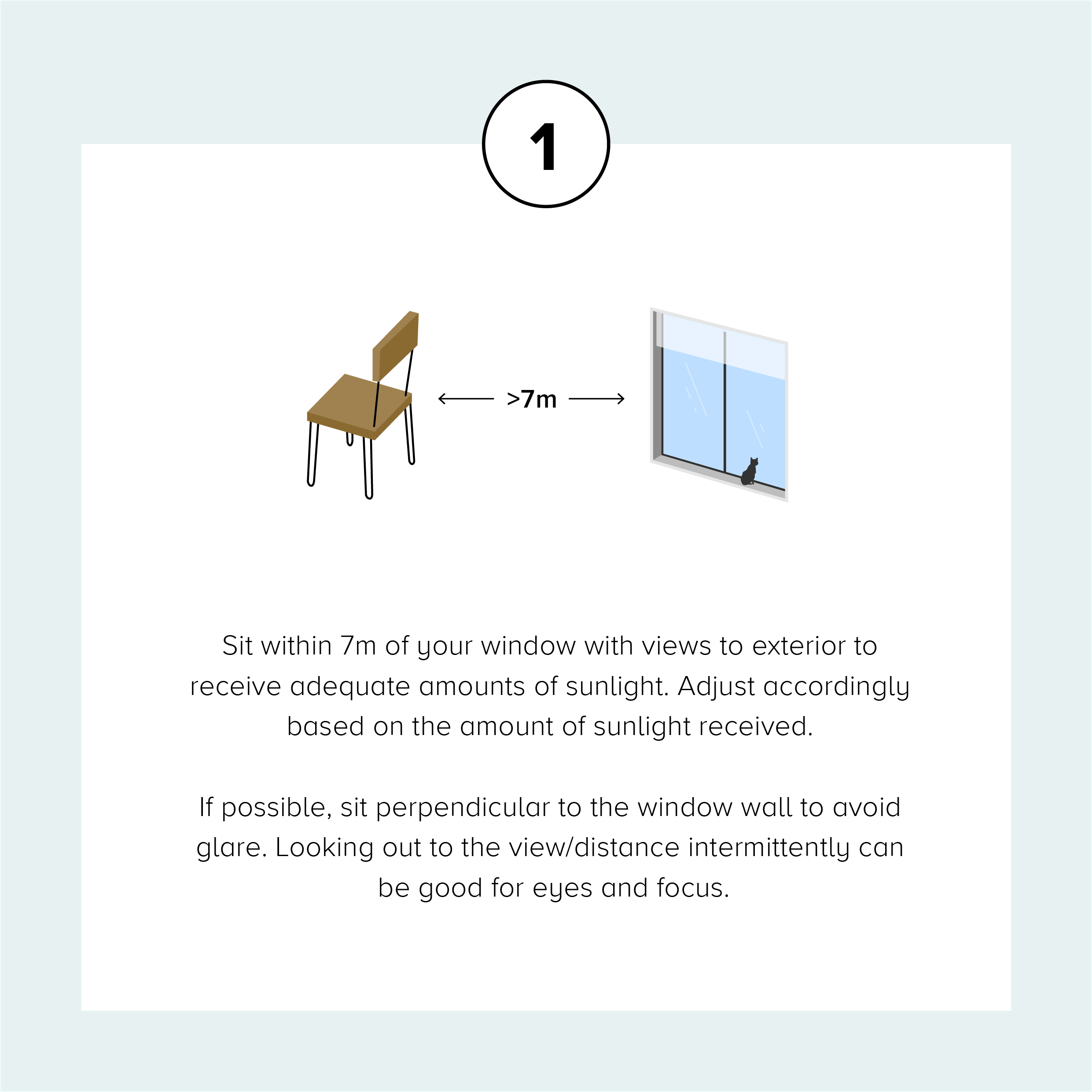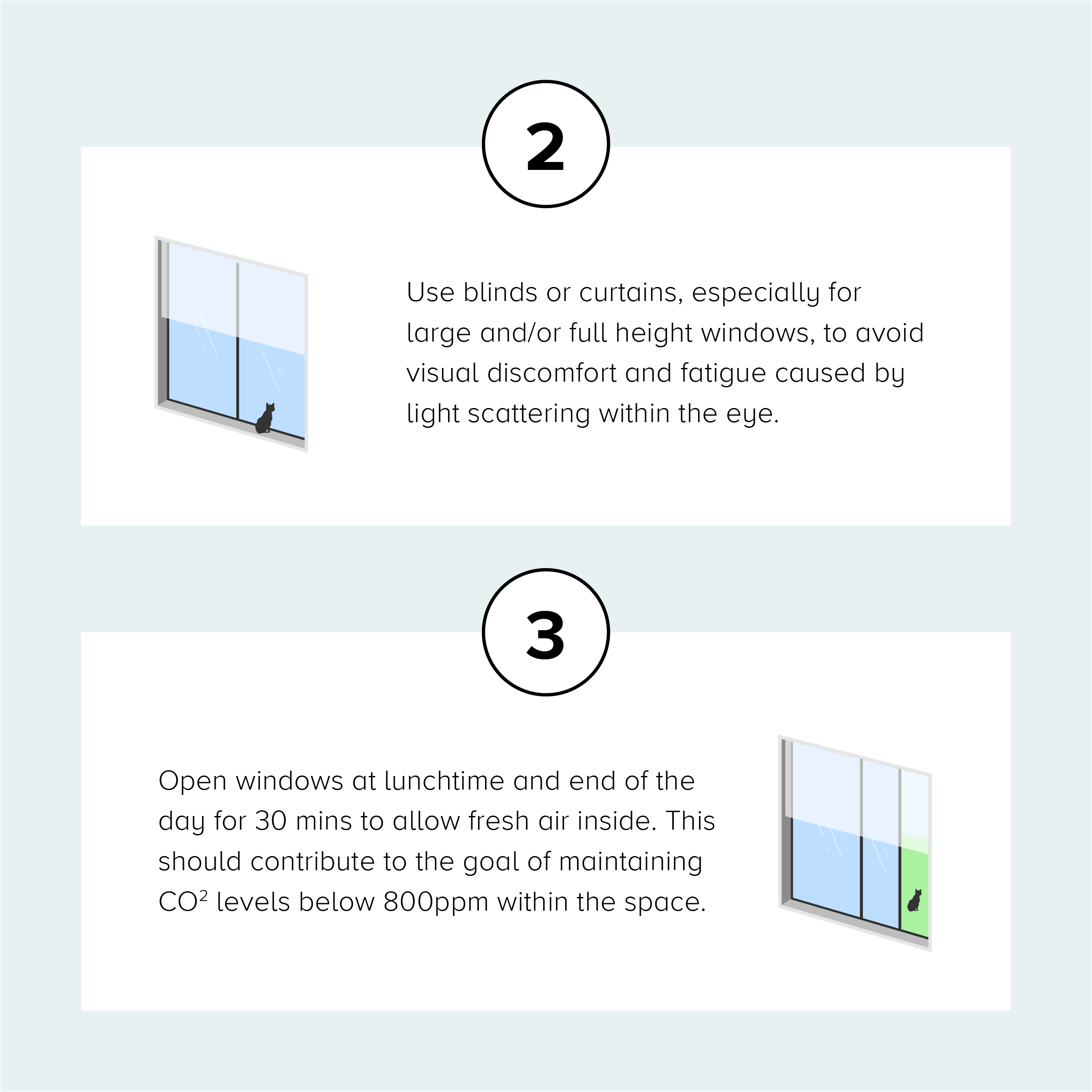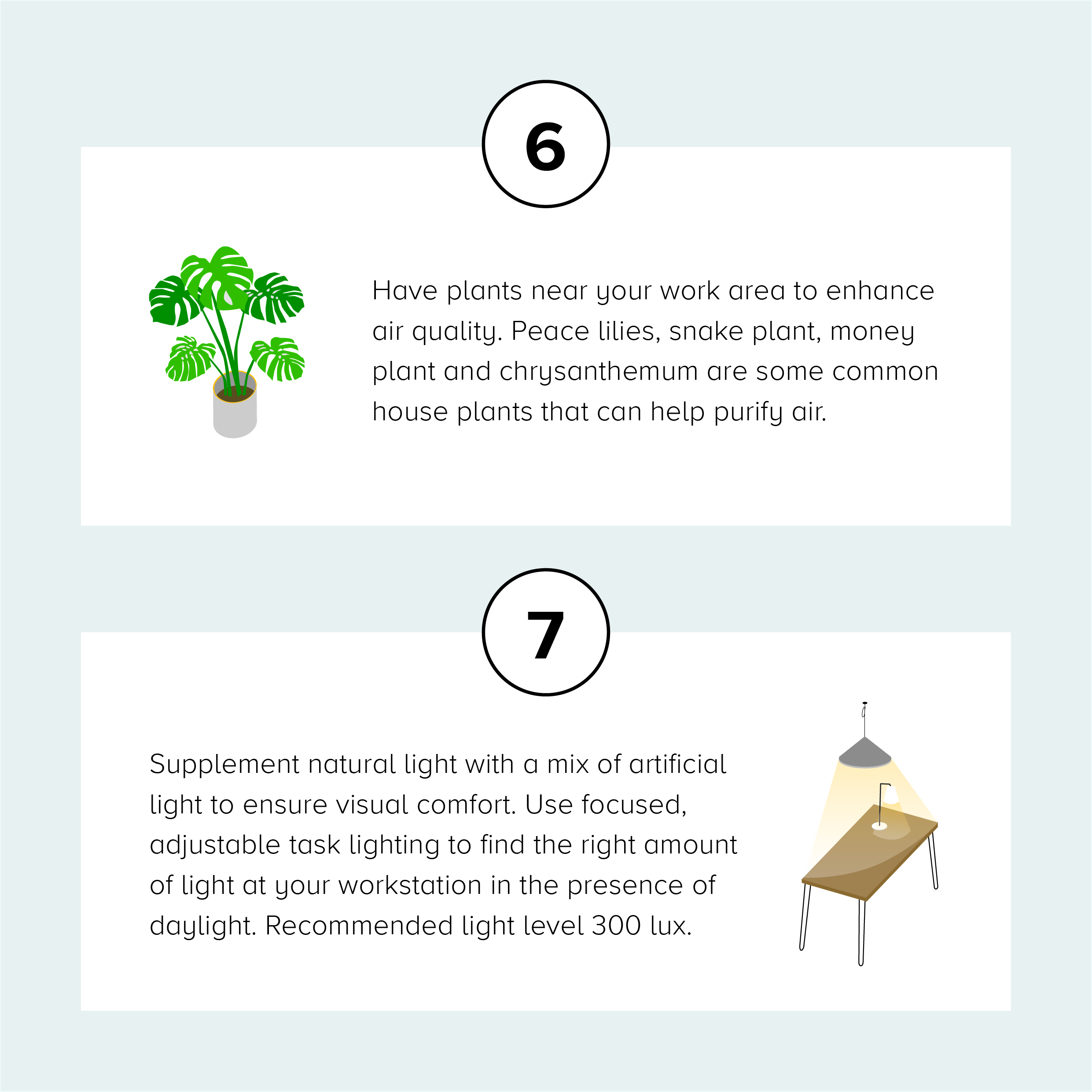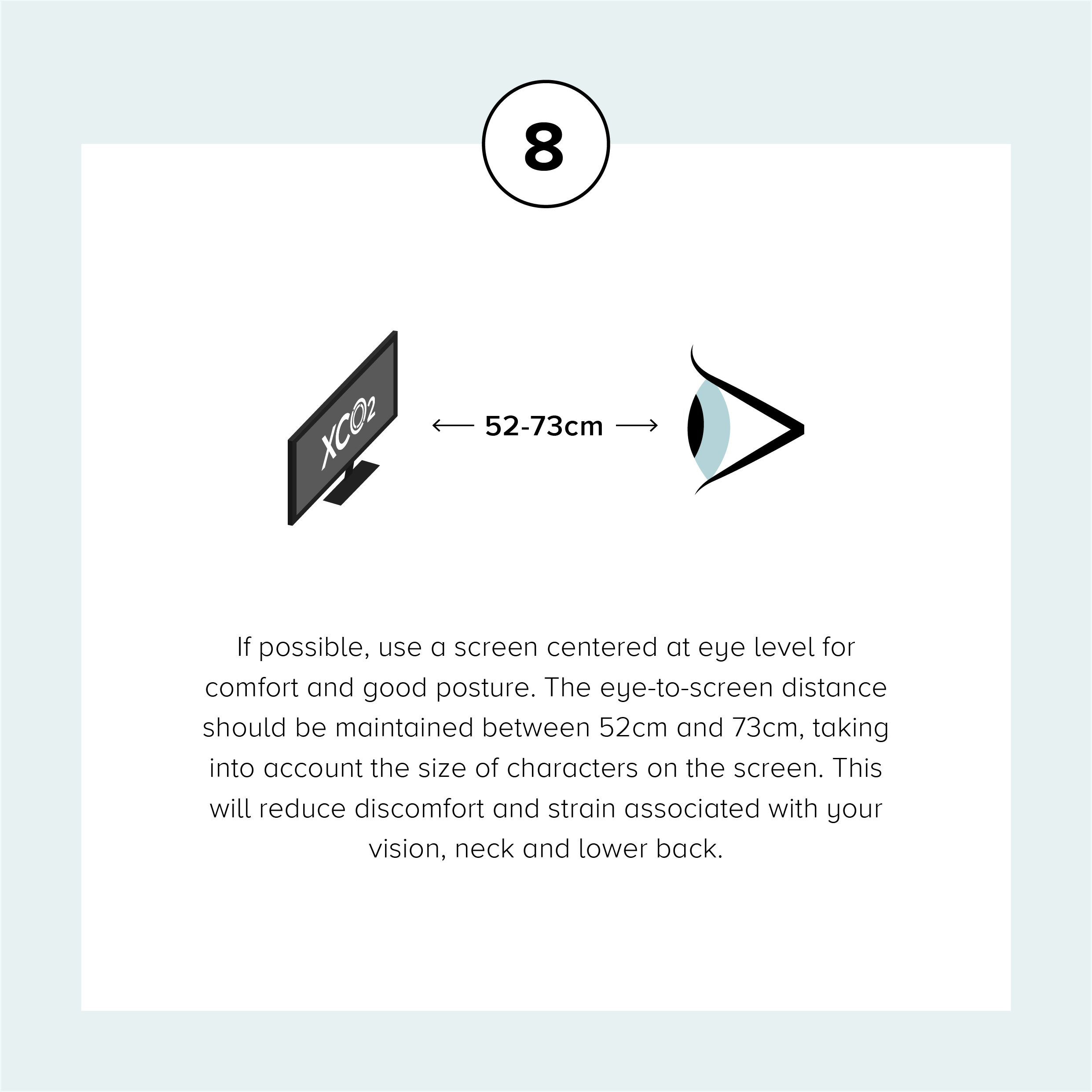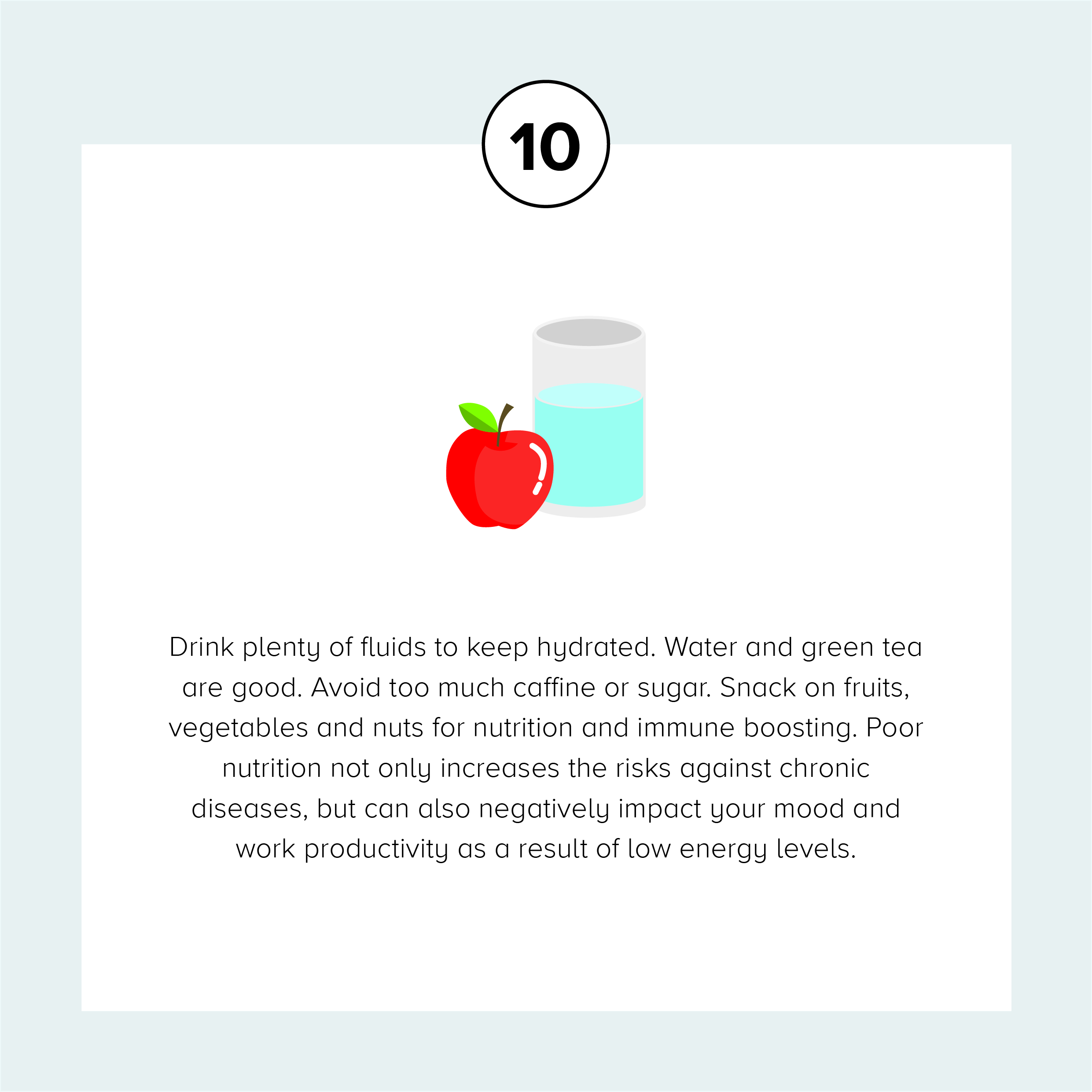Step 1: Sit within 7m of your window with views to exterior to receive adequate amounts of sunlight. Adjust accordingly based on the amount of sunlight received. If possible, sit perpendicular to the window wall to avoid glare. Looking out to the view/distance intermittently can be good for eyes and focus.
Step 2: Use blinds or curtains, especially for large and/or full height windows, to avoid visual discomfort and fatigue caused by light scattering within the eye.
Step 3: Open windows at lunchtime and end of the day for 1/2 hour to allow fresh air into your home office. This should contribute to the goal of maintaining CO2 levels below 800ppm within the space.
Step 4: Set room temperature to between 19-27°C (based on ASHRAE 55) to balance comfort and productivity. During warm/hot weather, use fans for increased air movement which can reduce the perceived air temperature of the room for an added ‘cooling effect.’
Step 5: Have a clear path around the desk and get up and walk around 5 times everyhour. Carry out some desk-based stretches to help posture and comfort. This can reduce sedentary behaviour that is linked to many negative health outcomes such as musculoskeletal disorders due to a lack of movement and blood supply.
Step 6: Have plants near your work area to enhance air quality. Peace lilies, snake plant, money plant and chrysanthemum are some common house plants that can help purify air.
Step 7: Supplement natural light with a variety of artificial light to ensure visual comfort. Use focused and adjustable task lighting to find the right amount of light at your workstation in the presence of daylight. Recommended light level 300 lux.
Step 8: If possible, use a screen centered at eye level for comfort and good posture. The eye-to-screen distance should be maintained between 52cm and 73cm, taking into account the size of characters on the screen. This will reduce discomfort and strain associated with your vision, neck and lower back.
Step 9: Use Flux or similar apps to control colour temperature of screens – set to warmer colours for end of the working day to help switch off from work. Avoid long exposures to cooler colours as it can inhibit the secretion of melatonin which is essential for a good quality of sleep.
Step 10: Drink plenty of fluids to keep hydrated. Water and green tea are good. Avoid too much caffine or sugar. Snack on fruits, vegetables and nuts for nutrition and immune boosting. Poor nutrition not only increases the risks against chronic diseases, but can also negatively impact your mood and work productivity as a result of low energy levels.


